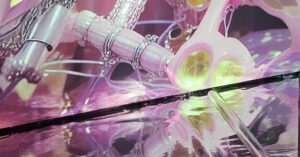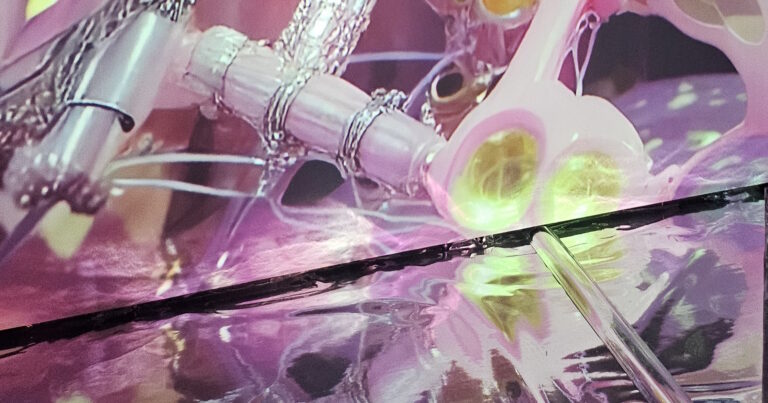10. Chapter 10
We ended last week with a victory of the Minamoto: Taira no Shigehira was captured and he’s paraded around the Capital – Aida style – alongside the severed head of his warriors. The idea of retired Emperor Go-Shirakawa is to offer him in exchange for the return of the Imperial Regalia, the three sacred treasures symbolizing virtue, wisdom and benevolence.

The three objects are still preserved, but kept secret: there’s no idea on what they actually look like.
The Taira refuse the exchange and Shigehira starts to worry that his past sins will catch up with him when he’s executed and he embarks on a journey to try and become a Buddhist monk. Minamoto no Yoritomo receives him and here we meet another famous dancer of the Tale: Senju-no-mae. She played the biwa and eventually performed with the hostage himself, who was well-versed in the oteki, a sort of transverse flute. Shigehira impresses everybody with his courtly skills and eventually takes up with Senju, but their life together isn’t destined to last.
The whole story is told on this page, though I find the prose to be a little lacking.
Within the chapter, another story of tragic love is inserted to pair up with the one of Shigehira and Senju: Kiyomori’s grandson, Taira no Koremori, is stuck at Yashima and grieves to be apart from his family. He travels to Mount Kōya and there he meets with a holy man, Takiguchi Tokiyori. The tragic love story is his, a tale within the tale.
As the story goes, Tokiyori was once a Minamoto, a courtier, but he fell in love with a woman of inferior birth: the beautiful Yokobue. Tokiyori’s father was opposed to the marriage, however, and he wanted to see him with someone of his own same rank: Tokiyori, however, preferred to become a priest rather than betraying his heart. Once at the monastery, however, his beloved Yokobue came looking for him, but he had already taken up his vows and remained firm in his stance. She waited and waited for him to come out and see her, but he never did. She eventually became a nun, but died of a broken heart soon afterwards.
Taira no Koremori hears Tokiyori’s preachings and becomes a monk himself, he fully embraces the Buddhist teachings about abandoning one’s attachments and eventually decides to throw himself into the sea, where he drowns. According to other versions, his drowning was accidental after boarding a boat at Hama-no-miya.
The beautiful illustration below, depicting Taira no Koremori slashing at a Demon, is part of the series A Mirror of Great Warriors of Japan done by Tsukioka Yoshitoshi around 1879.
Meanwhile, the Taira suffer another defeat at Fujito and they have to retreat.
11. Chapter 11
A small force led by Minamoto no Yoshitsune lands on the island of Shikoku, where the Taira have retreated. His plan is simple: as they did in the Battle of Ichi-no-Tani, Yoshitsune plans an attack from two fronts, but the Taira decide to flee on their boats, shooting arrows to cover their retreat. Their commander, Taira no Noritsune, famously aims to kill the Minamoto commander, but one of Yoshitsune’s attendants, named Tsuginobu, shields him with his body and dies protecting him. The scene is illustrated in the stunning piece below.
From one of the boats, one of the Taira boats mounted a fan on top of its mast as a sign of challenge to the Minamoto and Nasu no Yoichi, a young archer in the Minamoto army, shoots the fan with a single arrow while mounting his horse in the waves of the sea.
The head of the Kumano shrines decides to join forces with the Minamoto after complex fortune-telling involving 200 cocks (I guess they really wanted to be sure). Other provinces follow and eventually the Minamoto end up surpassing the Taira fleet by over 2000 ships. Not without internal quarrels, the Battle of Dan-no-ura starts and, after a brief moment where the skilful positioning of the Taira forces seem to be dealing them the upper hand, things are not looking good. This is when, as I was anticipating, Kiyomori’s widow commits suicide by drowning herself with 5-years old Emperor Antoku.
Yoshitsune returns to the Capital with two of the Imperial Regalia, the mirror and the jewel, and with prisoners who are again dragged around in a parade of shame. Taira no Munemori and his son Kiyomune are beheaded and their heads are hung near a gate of the Capital. Taira no Shigehira is allowed to become a monk and sees his wife for the last time in another famous scene, but after arriving at Nara he is executed in front of the monks and his head is nailed to the door of the very same temple he burned to the ground following the Battle of Uji. His wife, Fujiwara no Hoshi, also known as Fujiwara no Sukeko, becomes a nun after retrieving his head and burning his remains.
12. Chapter 12
As lots of the previous narrative segments are ending with fires, this one traditionally starts with an earthquake in the Capital.
Minamoto no Yoritomo and Minamoto no Yoshitsune never got much along and are now fighting: the former sends an assassin to kill the latter, failing, and then kills Yoshitsune’s half-brother Minamoto no Noriyori as he wouldn’t go against his blood. Yoritomo then sends against him a large force, led by Hōjō Tokimasa, and Yoshitsune is forced to flee from the Capital. All potential heirs to the Taira family are executed and the hunt for the remaining begins. An informant gives up the position of the monastery where Koremori’s family is hiding: the last male heir of the Taira family is hiding there, his name is Taira no Takakiyo, but he’s known as Rokudai which means “sixth-generation”, and he’s only 12. But that never stopped anybody. It is at this point that Rokudai’s old nurse finds Mongaku, the monk we met in Chapter 5, and convinces him to intercede for mercy. As it often happens, mercy means that Rokudai is forced to become a monk, but at least his life is spared.
After the death of retired Emperor Go-Shirakawa, however, Yoritomo decides not to trust the odds and Rokudai is finally executed, bringing the Taira line to an end.
After Yoritomo’s death, Mongaku plans a rebellion to install another Prince on the throne, but he’s discovered and fails. He is exiled to the island of Oki and this is traditionally one of the last episodes of the different versions of the Heike Monogatari.
Illustrations
I didn’t manage to squeeze in all the amazing artworks that the story of the Heike has inspired and I certainly won’t be able to do it now, but at least I can show you some of my preferred ones.
One of my favourite triptychs is the one in which Minamoto Yoshitsune and his men, on their ship, are attacked by shadows of Heike ghosts in the sky and Benkei fights them off on the stern of the ship.
Utagawa Kuniyoshi, “Minamoto Yoritomo Is Rewarded by the Emperor for Subjugating the Heike” (1865)The ghosts of the defeated clan form a sort of “Wild Hunt” and they are often depicted as hunting in packs, in the air or in the deep waters they were defeated in. See for instance this triptych of extraordinary beauty, by the same Utagawa Kuniyoshi, in which we see women diving In the Western Sea and meeting the ghosts of the Heike Clan.

Utagawa Kuniyoshi, “In the Western Sea, the Diving Women See the Ghosts of the Heike Clan Deep Under the Water” (1845)
According to the Honolulu Museum of Art, “…after leading the Genji clan to victory over the Heike, Yoshitsune was held in considerable esteem by his generals and wielded significant political power. His brother Yoritomo, the head of the Genji clan, feared Yoshitsune would lead a rebellion against him, and ordered him killed. Yoshitsune was forced to flee the capital in Kyoto with just a handful of retainers and seek shelter from loyal friends. In the scene depicted here, Yoshitsune and his retainers try to flee from his brother’s assassins by boat across the strait at Daimotsu no Ura near present-day Osaka, but are blocked by a fierce storm. Yoshitsune had won the final, decisive battle of the Genpei war in the strait of Dan no Ura, and many Heike warriors drowned in its waters. Now, as Yoshitsune tries to escape by boat, ghosts of the drowned Heike warriors try to take their revenge during the storm. Benkei, who in many ways has become the central figure of the Yoshitsune story by this point, is able to draw on his training as a monk to say prayers that ward off the ghostly horde. Among Benkei’s defining features are his quick wit and his mastery of many skills, military, religious and literary, which allow him to respond effectively to any situation, even when his master loses hope or is incapable of responding appropriately”.
The museum drafts this description to accompany an 1853 scene, always by Utagawa Kuniyoshi: Yoshitsune and Heike Goblins.
“[Yoshitsune] is often depicted with a multitude of tools on his back, symbolizing his numerous skills and tricks (see also Ushiwakamaru and Benkei). Some of the ghosts are depicted as crabs, a reference to a species of crab known as heikegani (Heikea japonica), which to this day live in the waters of Dan no Ura and have patterns on their shells resembling human faces. They are said to be reincarnations of the Heike warriors who died there. The use of black ink to depict the roiling, stormy sea is quite distinctive. Also of note is the wood grain, visible in the sky.
This illustration apparently has inspired contemporary American tattoo and print artist Don Ed Hardy, among others. (see the Tattoo exhibition held in 2005 in the same Honolulu Museum).
The characters of the tale are depicted by a beautiful series done by Toyohara Chikanobu in 1906: we have Kotoku writing his message on the Cherry Tree…

Toyohara Chikanobu, characters from the Heike Monogatari: Kotoku writes his message on the Cherry Tree (1906)
…Shizuka Gozen
is performing a dance
for Taira no Kiyomori…
…Sasaki and Kajiwara
race with their horses in the river
in order to reach the enemy’s camp first…
…Kumagai signalling Taira no Atsumori with his fan,
signifying he wants to fight her in a duel…
…Minamoto no Yoshiie
on a rather restless black horse…
…Shigemori meditating
at the edge of his water pool…
Akechi Mitsuyoshi
crosses a river
with his horse.
If you like him, I suggest you take a look at his Chiyoda Castle‘s Album of Men and Album of Women, or at his Beauty and Cherry Blossoms.
They are awesome.
If you browse for it, you might also find a very special illustration of Tomoe, my favourite character, done by Ogata Gekko during the early years of the XX Century: the artist shows her on horseback, with attributes highlighting her archery skills, and in a complicated twist in which both her and her horse are turning around to watch their shoulders. Which, as we know, you can never do enough.
As it’s customary for Japanese illustrators, you also have illustrations of actors playing roles in plays retelling the Heike Monogatari. One of them is this 1824 one, by Utagawa Kunisada, in which we see the kabuki actor Iwai Hanshiro V playing the role of Monomi no Omatsu in the play ‘Yamatogana Heike Monogatari’ (倭仮名平家物語) by Sakurada Jisuke II. You might also want to check out this one of the actors Onoe Eizaburô and Nakamura Fukusuke II playing the toles of the courtesan Akoya and Hanzawa Rokurô in the Yasa Heike Shirabe no Futsutsuka (1863), and here you have one from the play Yamato-gana Heike monogatari, focusing on the main battle.

Utagawa Kunisada, “Iwai Hanshiro V in the role of Monomi no Omatsu, emerges from a bamboo thicket at night” (1824)
The tale also has a “modern” retelling, known as Shin Heike Monogatari, The New Story of Heike. Tokuriki Tomikichiro, an influential XX Century figure of the print movement, illustrated this version with his strikingly modern style. You can see a scene below: the bridge over the Kamo River in Kyoto.
























No Comments